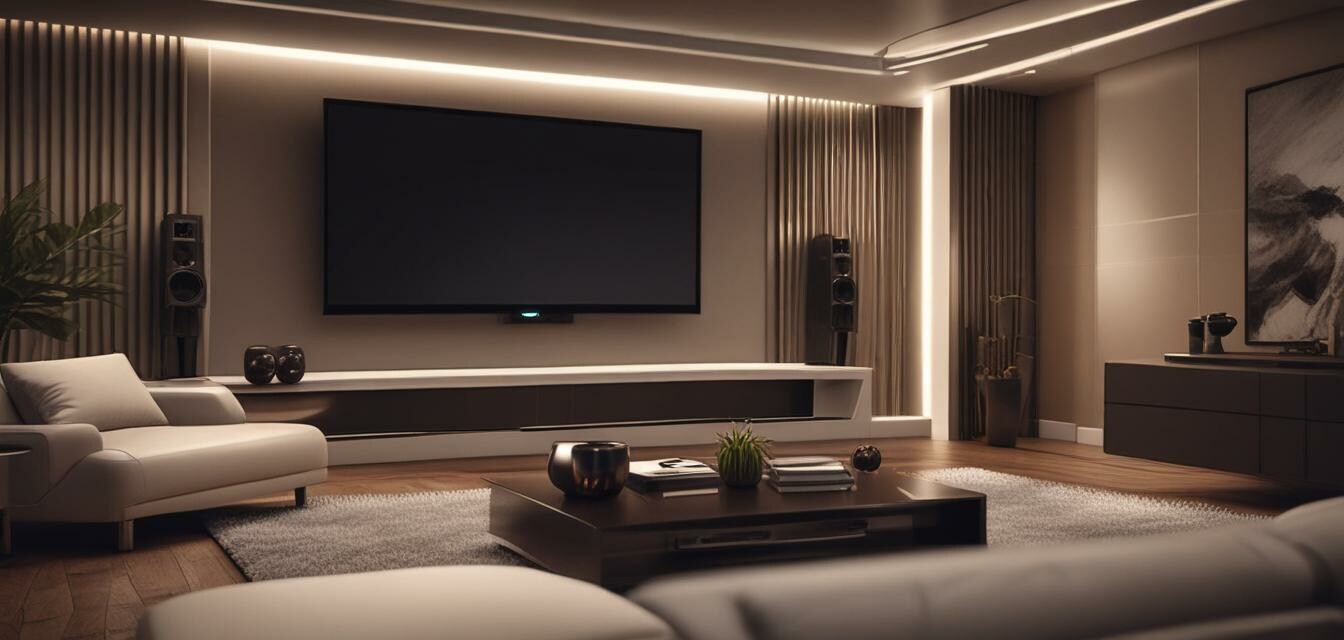
Exploring the Evolution of Home Theater Sound Systems
Key Takeaways
- Technological advancements have drastically improved audio quality in home theaters.
- Sound formats like Dolby Atmos provide a more immersive experience.
- The rise of wireless systems offers flexibility in setup.
- Market trends show increasing demand for high-end audio solutions.
- Proper installation and acoustic treatment are crucial for optimal sound.
In the last few decades, home theater systems have transformed from basic setups with limited sound quality to sophisticated systems that replicate movie theater experiences right in our homes. Let's dive into how technology has evolved and what this means for audiophiles and casual listeners alike.
The beginning of home theater audio
The concept of home audio systems began gaining traction in the 1980s but has come a long way since then. Here’s a quick look at the timeline of significant milestones:
| Year | Milestone |
|---|---|
| 1980s | Introduction of stereo systems for home use. |
| 1990s | Advent of 5.1 surround sound systems. |
| 2000s | Emergence of high-definition audio formats. |
| 2010s | Dolby Atmos and immersive audio systems gain popularity. |
| 2020s | Wireless audio solutions and smart home integration. |
Technological advancements in sound systems
Each decade brought innovations that changed the landscape of home theater audio. Below are some of the key advancements shaping the systems we use today:
- High-definition audio formats: These formats offer higher fidelity sound compared to standard formats.
- Multi-channel audio: Systems now support multiple channels, providing a more immersive sound experience.
- Wireless connectivity: Bluetooth and Wi-Fi enabled speakers eliminate the need for messy cables.
- Smart technology: Integration with smart home devices allows for easier control and setup.
Surround Sound & Immersive Audio
One of the most significant innovations has been the development of immersive audio formats. The introduction of Dolby Atmos allowed sound to move around the listener, providing a three-dimensional audio experience.
Trends in luxury home theater installations
As demand for high-quality audio grows, many homeowners are investing in luxury home theater systems. These installations often include:
- Custom-built rooms designed for optimal acoustics.
- High-end speakers that blend seamlessly into the decor.
- Acoustic treatments and soundproofing for enhanced audio quality.
Current trends in the industry
Major trends influencing the market for high-end home audio systems include:
- Rise of wireless home audio systems.
- Increased popularity of soundbars with surround sound capability.
- Growing interest in immersive audio formats like Dolby Atmos.
- Greater demand for compact and aesthetically pleasing audio solutions.
Pros
- Enhanced audio quality that leads to a more enjoyable viewing experience.
- Flexible and customizable setups to fit personal spaces.
- Availability of multiple channels and advanced audio formats.
- Reduction in clutter thanks to wireless technology.
Cons
- High initial investment for luxury systems.
- Complexity in setup and arrangement.
- Ongoing maintenance and updates required for technology.
- Requires space for installation and acoustical treatments.
Are you ready to upgrade your sound system?
The evolution of home theater sound systems has created amazing possibilities for audio enthusiasts. Whether you're an audiophile looking to enhance your listening experience or someone who simply wants better sound quality for movie nights, there are many options available for you today. For more information on the various products available, check our Home Theater Receivers and Speakers and Sound Systems pages.
Conclusion
As technology continues to advance, the future of home theater audio looks bright. With innovations occurring regularly, staying updated on the latest developments is essential for anyone looking to enhance their audio experience. For further insights into home audio setups, visit our Setup Tips or Buying Guides sections.

